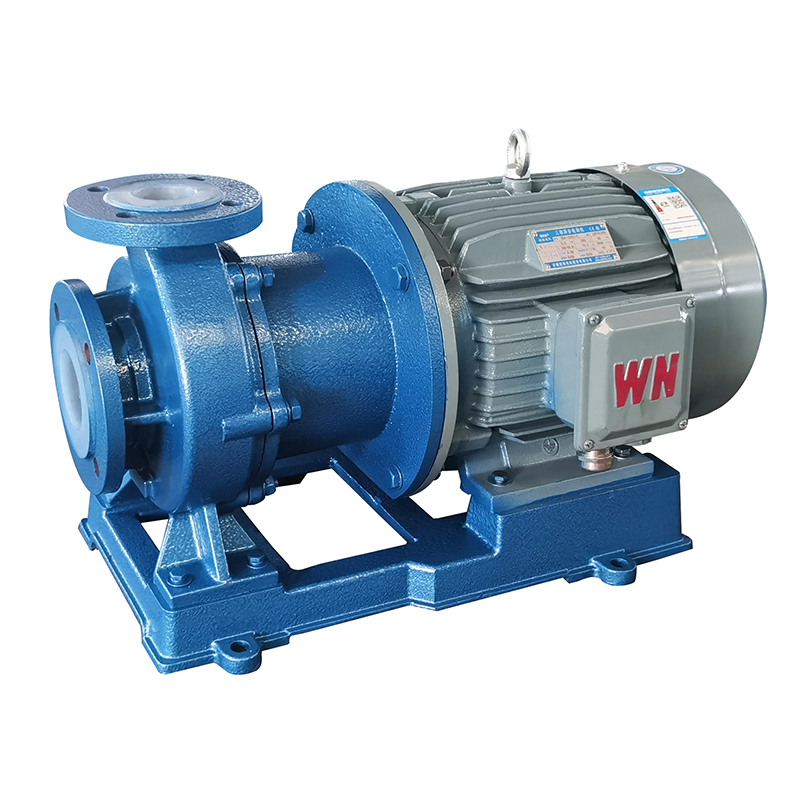TEL: +86 15587495056
Which pump to choose in the production of phosphoric acid industry

The selection of pure acid materials is relatively simple, but because of the different methods of producing and processing phosphoric acid, the production is mixed with solid particles such as silica, aluminum oxide Al2O3, magnesium oxide MgO and other particles with high hardness, and soft particles such as calcium nitrate Ca (NO3) 2, calcium sulfate CaSO4, and some impurities such as fluoride, chloride, sulfuric acid and other acid substances in the actual products, Therefore, the pump operation is a harsh medium with both corrosivity and wear. Therefore, the selection of materials is relatively complex. Attention should also be paid to the corrosion and wear and the interaction between them, especially when there is a certain amount and concentration of Cl – in the medium.

1、 Selection of phosphoric acid pump:
- Nickel-chromium stainless steel or high-alloy stainless steel centrifugal pump to transport phosphoric acid and waste liquid with calcium sulfate slurry
- Select the rubber lined mud pump or steel casing, and the impeller or shaft shall be made of stainless steel
- Some are made of diaphragm pump, the pump body is lined with rubber or made of hard lead, the diaphragm is made of rubber, and the plunger and other parts are made of stainless steel
- Use impermeable graphite pump in some cases.
What pump is used for phosphoric acid
2、 Selection of materials for phosphoric acid pump:
High-nickel cast iron is more suitable for dilute phosphoric acid (less than 5%) and 50-70% medium-concentration phosphoric acid without gas filling at room temperature, and is not suitable for gas filling and high-temperature phosphoric acid
Chromium-nickel stainless steel (316) containing molybdenum has good corrosion resistance to phosphoric acid, and is suitable for boiling acid within 50% and hot acid between 50% and 85% (between 100 ℃)
The concentration and temperature of phosphoric acid medium for stainless steel without molybdenum are not high, such as 0Cr18Ni9 (304), which is more suitable for boiling acid within 5% and normal temperature acid within 10%, while 1Cr18Ni9 (302) is not suitable for use.
High-alloy stainless steel is more suitable for phosphoric acid corrosion at any concentration and high temperature. It is also suitable when the acid contains a small amount of fluorine ions and gypsum slurry; Typical media, such as phosphoric acid, contain sulfuric acid, hydrofluoric acid, air or up to 65% or more solid suspended solids.
Copper alloy is more suitable for phosphoric acid of any concentration without gas filling below 100 ℃.
Nickel-copper alloy is more suitable for non-pneumatic pure phosphoric acid below 90 ℃, and gas charging and high temperature will increase corrosion.
Nickel-chromium-iron alloy (Inconel) is more suitable for full-concentration phosphoric acid at normal temperature, but not for high-concentration hot phosphoric acid.
Nickel-molybdenum-chromium-iron alloy (Hastelloy) is more suitable for full-concentration phosphoric acid whose temperature can reach the boiling point. The corrosion of Hastelloy in concentrated acid at normal temperature is stronger than that in dilute acid at normal temperature. In pure acid at normal temperature and 85 ℃, the corrosion of Hastelloy is basically undetectable. When there are fluorine ions in phosphoric acid, the corrosion of Hastelloy has no effect, but the presence of trivalent iron ions can increase the corrosion of Hastelloy; Hastelloy can meet the requirements of corrosion resistance and high strength at the same time. It is often used as pump shaft, impeller, mixer blade, and also as a mixture of acid-resistant, oxidation-resistant media, phosphoric acid and other corrosive media. It has a long first life, but high cost;
Generally, when brass, high-silicon iron, stainless steel or other cheaper metal or non-metallic materials can be used, Hastelloy should be avoided as far as possible.
Ceramics and glass are more suitable for full concentration phosphoric acid within 200 ℃, but they cannot be used when the acid contains trace fluoride.
Phenolic plastic pump is more suitable for all phosphoric acid with temperature within 80~120 ℃ and concentration within 85%.
PVC plastic is more suitable for full concentration phosphoric acid within 65 ℃.
Natural rubber, neoprene and butyl rubber are more suitable for acids within 65 ℃ and 85%.
